RHINOLOGY: MALFORMATIONS, FOREIGN BODIES AND EPISTAXIS OTORHINOLARINGOLOGY SECTION ORAL MANIFESTATIONS OF SYSTEMIC DISEASES 2nd year of Dentistry 2024/2025 Dr Ana Checa-Ros Department of Medicine & Surgery
1/13
There's no tags or description
Looks like no tags are added yet.
Name | Mastery | Learn | Test | Matching | Spaced |
|---|
No study sessions yet.
14 Terms
External part of nose
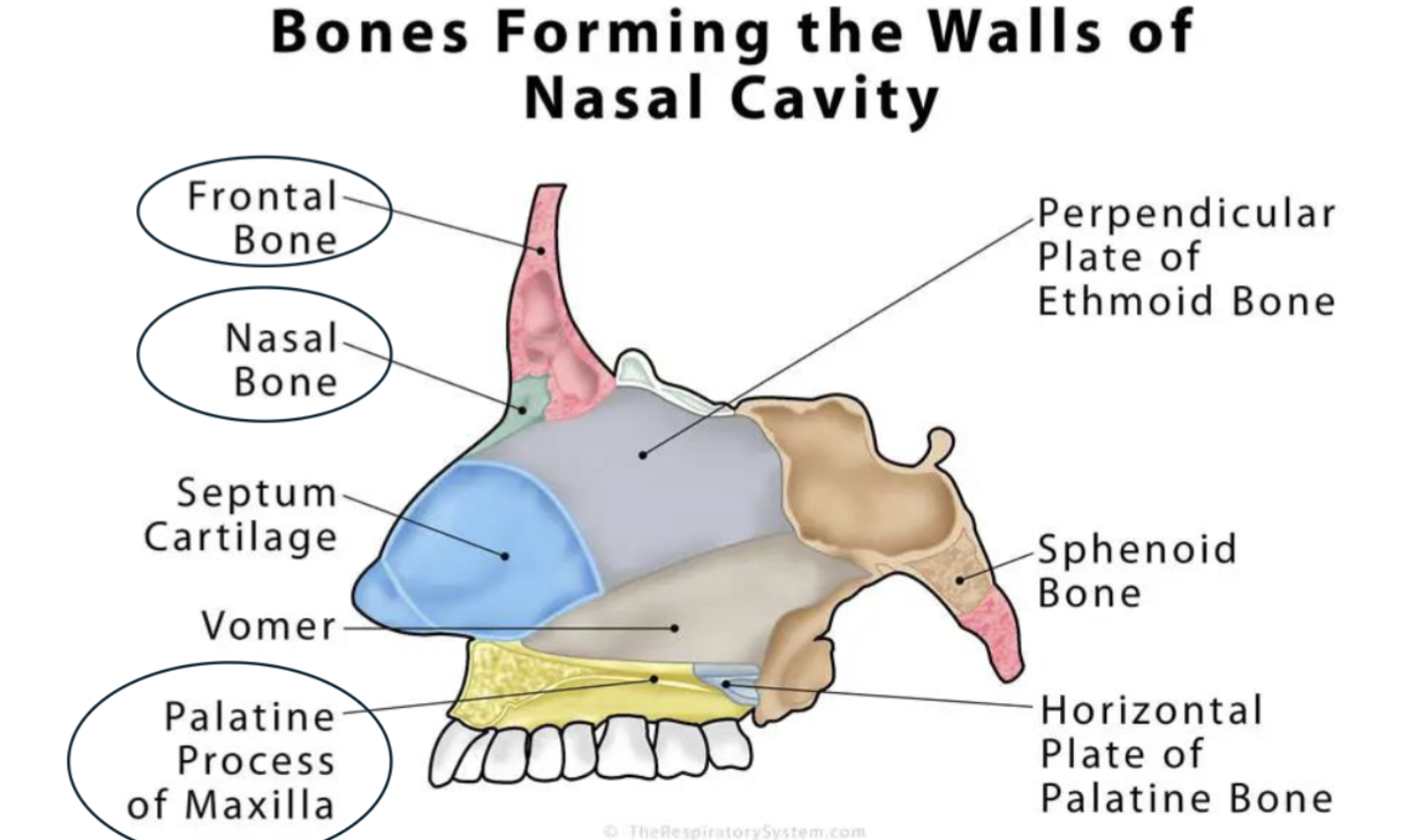
Internal nasal cavity
Communicates posteriorly with nasopharynx by two apertures called chonae
Communicates posteriorly with middle ear through Eustachian tube
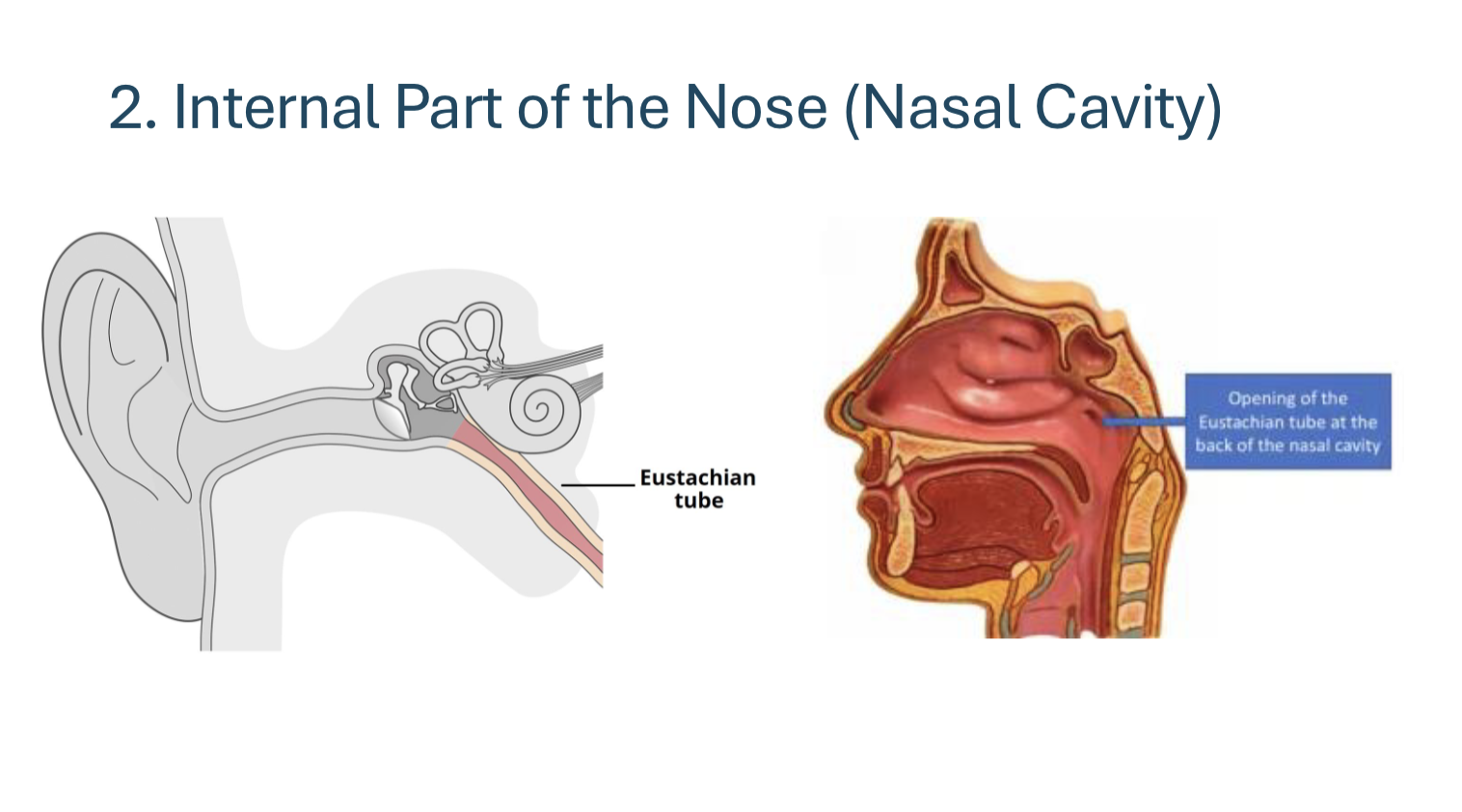
Meatus
The inferior, superior and middle nasal conchae (turbinates) attach to the lateral wall and project to the cavity.
Inferior nasal meatus: between the floor and the inferior
concha
• Middle nasal meatus: between the inferior and middle
concha
• Superior nasal meatus: between the middle and superior
concha
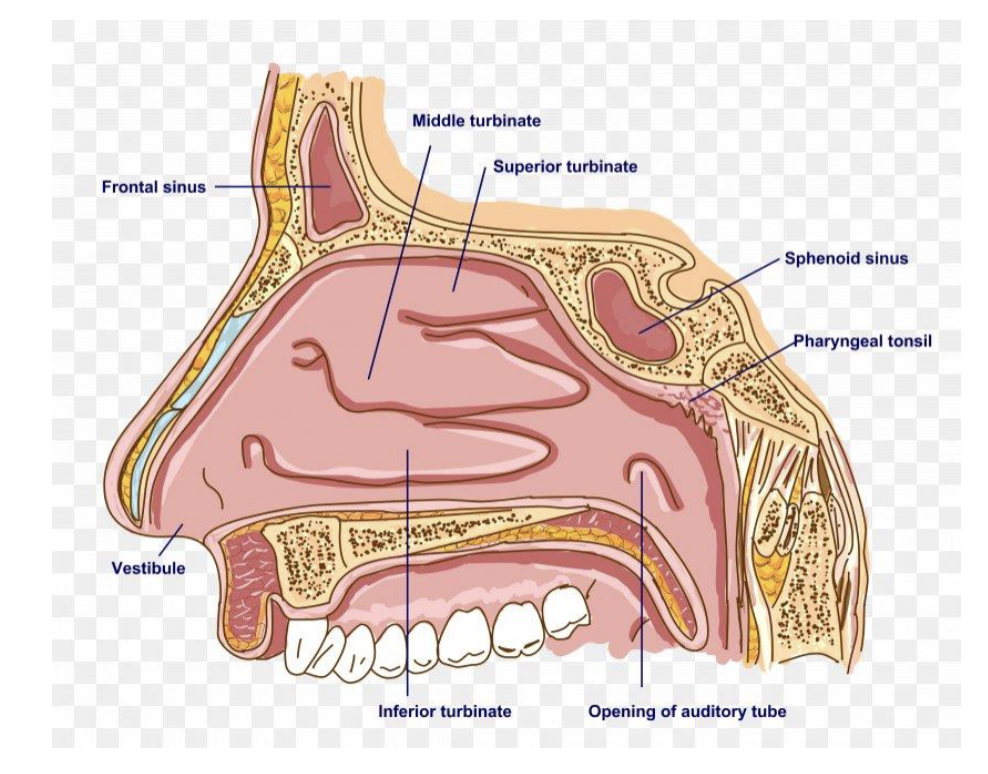
Blood supply
External carotid artery gives branches to supply the nasal cavity. The internal carotid artery gives branches to the external part of the nose. These branches anastomose at kiesselbachs area, where epistaxis occurs.
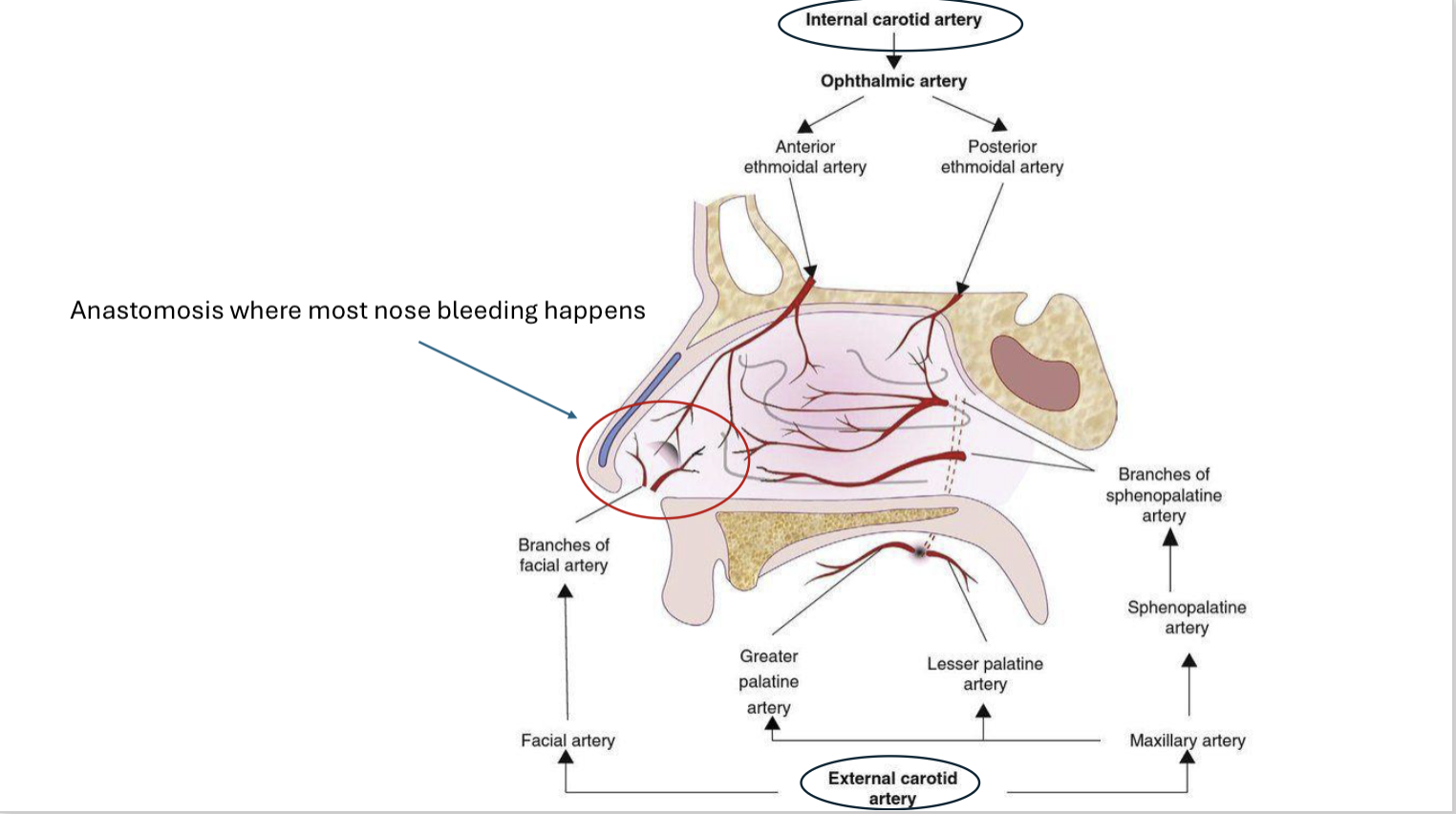
Nerve supply
Olfactory nerve (CN 1)- Provides olfaction
Trigeminal Nerve (CN 5)- Conveys general sensation
Paranasal sinuses
Several functions
Air humidification
• Increase of voice resonance
• Trapping microbes in the inspired air
• Protection of internal structures
Four paranasal sinuses-
Frontal sinuses
Sphnoidal sinuses
ethmoidal sinuses
maxillary sinuses
Maxillary sinus
Superior to root of maxillary teeth, located under the orbit and has the nasal cavity lateral. Largest sinus.
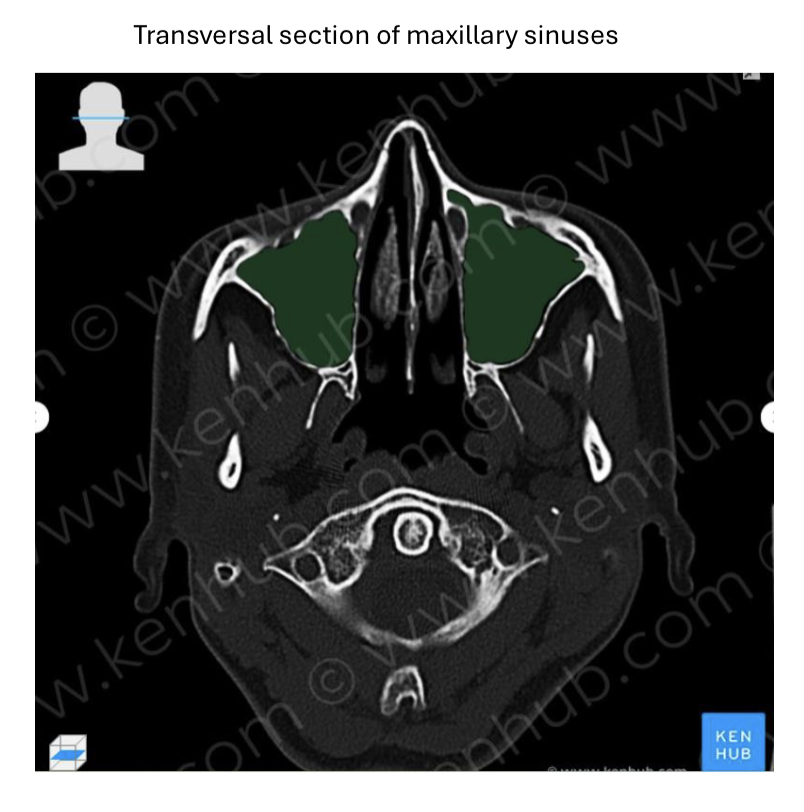
Frontal sinus
Sup[erior one, above the eyebrow
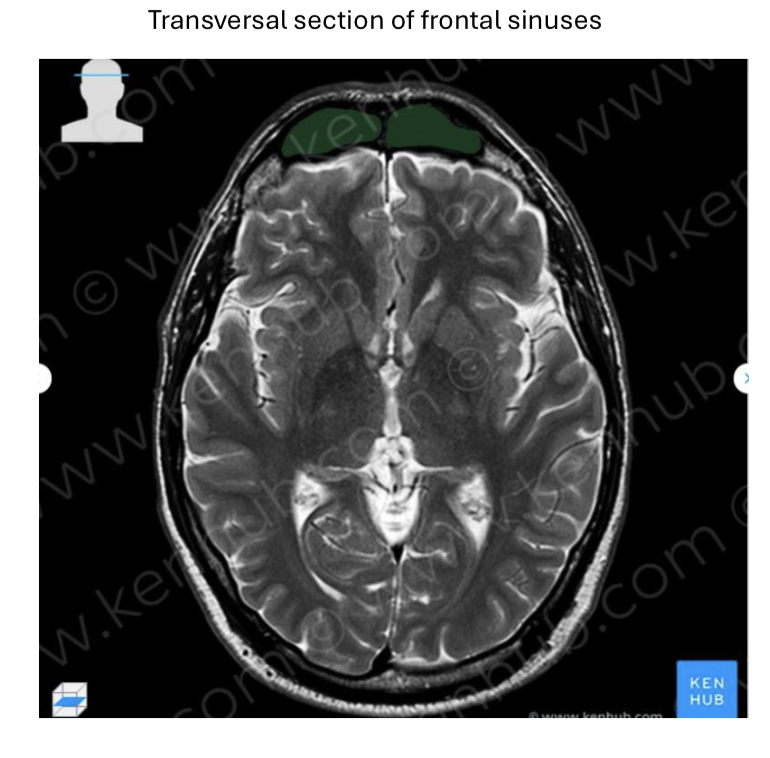
Sphenoidal sinus
Bellow stella turchina
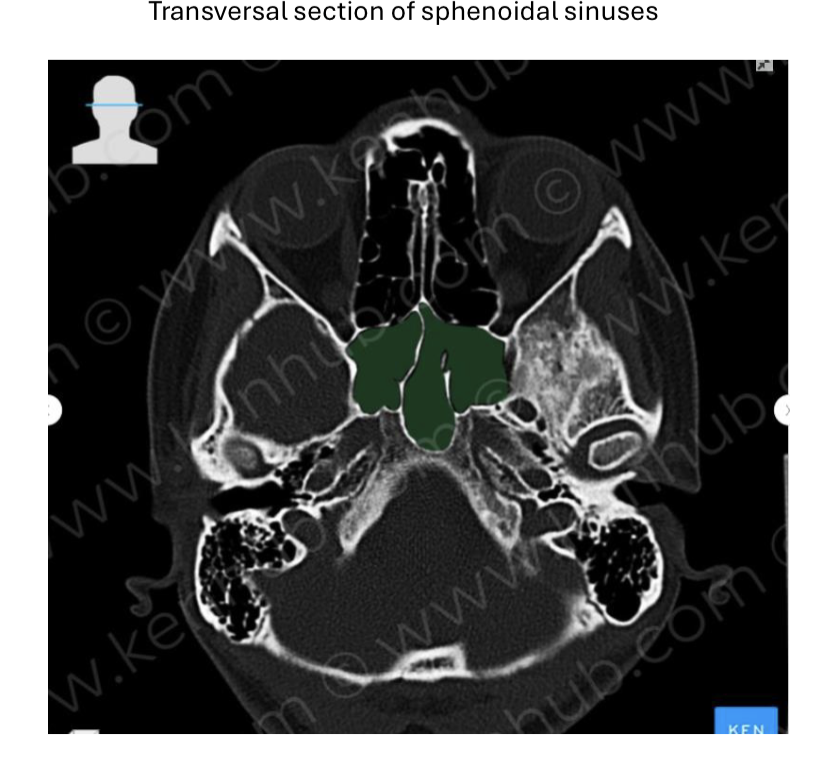
Ethmoidal Sinus
Located on ethmoidal bone. connected to orbital area so infection may be spread between them.
Arhinia
Congenital absence is nose.
Treatment is surgically created nasal airway or tracheostomy tube.

Unilateral Arhinia or Heminasal Aplasia
Unilateral absence of one nostril, reconstructive operation is needed.
Polyrhinia
Partial or complete duplication of nose
Choanal atresia
Obstruction of one or both chosen, chracterised by respiratory distress at birth, treatment is surgical.
Choanal atresia is a common finding of the CHARGE Syndrome:
• C=coloboma (eye malformation)
• H=heart defects
• A=atresia of the choanae
• R=retarded growth
• G=genitourinary abnormalities
• E=ear anomalies